Garden of Russolo by Yuri Suzuki
London Design Festival 2013: sound machines that transform and distort visitors' voices feature in this interactive installation by Japanese designer Yuri Suzuki (+ slideshow + movie).
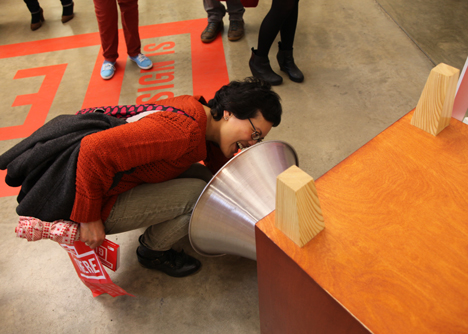
The Garden of Russolo at the Victoria and Albert museum comprises voice-activated devices that Yuri Suzuki calls White Noise Machines. Each processor is housed in a wooden box on four legs and has a horn on one side that receives sounds made by visitors and emits the transformed noises.
"If you speak or scream into one of the boxes, it captures your voice and translates it into various effects," Suzuki told Dezeen.
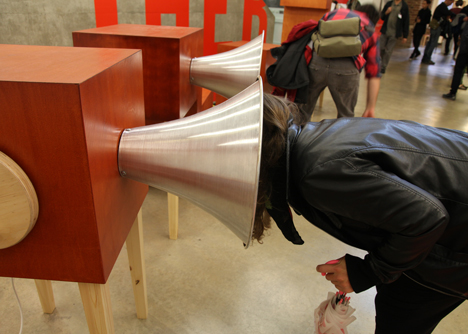
Each box is fitted with a Raspberry Pi computer to process the sounds it receives and each machine is programmed to create a different effect.
One machine plays sounds back in reverse, another creates musical notes and another can speed up or slow down sounds when a handle on the side is turned.
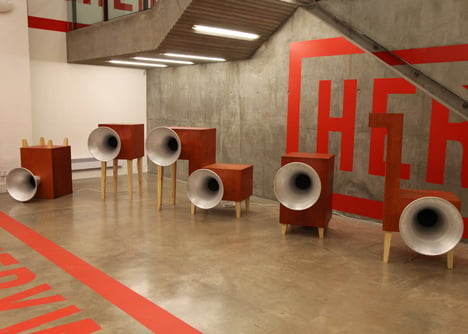
Suzuki told Dezeen that he created the machines to allow people to appreciate the sounds that they can make. "You never realise or feel the sounds that you are creating and the sounds that you do create disappear almost immediately," said Suzuki.
"I wanted to create a way for people to capture sound and a moment for them to realise how interesting it is," he added.
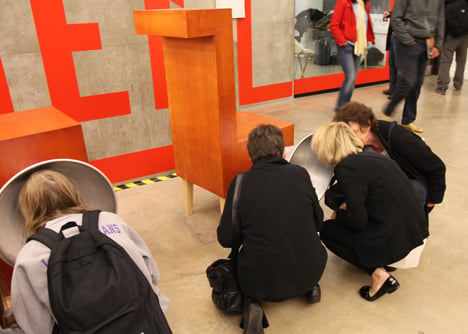
Suzuki originally designed the White Noise Machines for the Khoj International Artists’ Association in New Delhi, India, in 2009 where he was a resident artist.
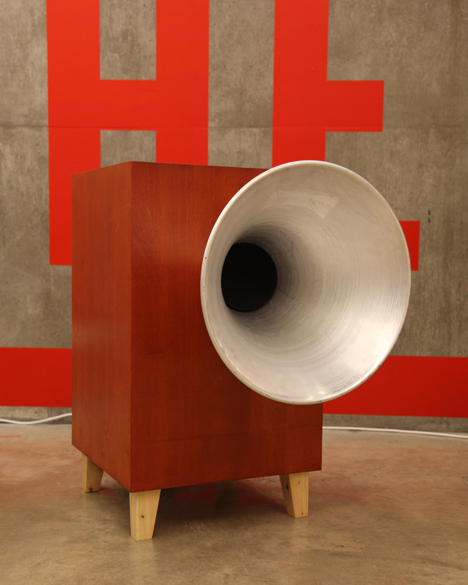
The Garden of Russolo was on display at the Victoria and Albert Museum last week as part of the London Design Festival. "A museum gallery is a great location to present this idea as most museums tend to be quiet and people care more about the noise they create," said Suzuki.
Here's a film of visitors interacting with the machines in the Victoria and Albert Museum's Sackler Centre foyer:
Here's another film of the sound machines in the V&A's John Madejski Garden:
Suzuki told Dezeen that he named the installation after Italian Futurist painter and composer Luigi Russolo. "He treated noise as music and created machines purely to create big noises," Suzuki said.
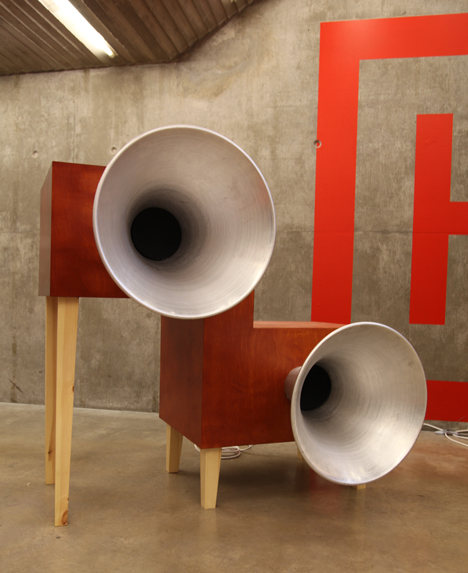
We've featured a number of Suzuki's other designs on Dezeen, including robots that travel along lines and turn coloured scribbles into music, a radio with a circuit board arranged like the London Tube map and a set of pens that record and play back sounds.
See all stories about Yuri Suzuki »
See all stories about music »
See all our stories about London Design Festival 2013 »
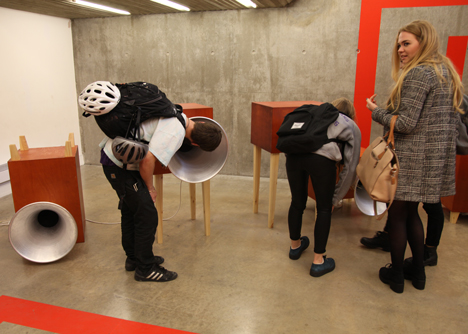
Photography and films are by Yuri Suzuki.
Here's more information from the curator:
White Noise Machine
Yuri Suzuki is an artist who explores the territory of sound and design by developing devices under the theme of sound-technology and music-human relationships. In our daily lives, we are unconsciously surrounded by environmental sound, but sound influences people's minds to a great extent. Suzuki produced numerous works focusing on this "noise".
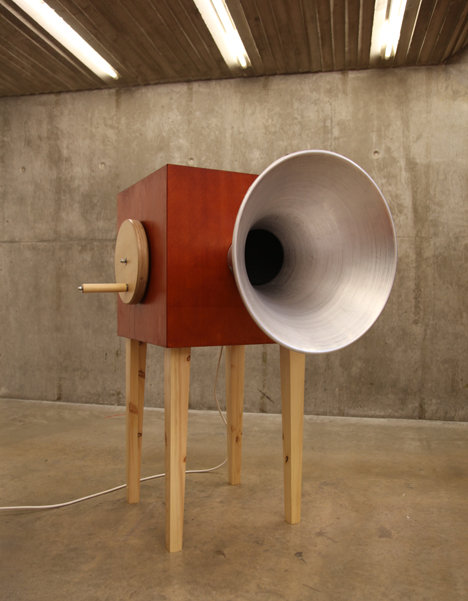
One representative work is sound-taxi: a London black cab outfitted with a sound collector microphone and many speakers records the surrounding noise, converts it into music, and outputs it real time.
Additionally, he produced Child Chiller, which uses the visible effect of "white noise" to erase noise with some other noise. This uses the noise that resembles the sound in Mother’s womb and is said to relax and stop babies from crying.
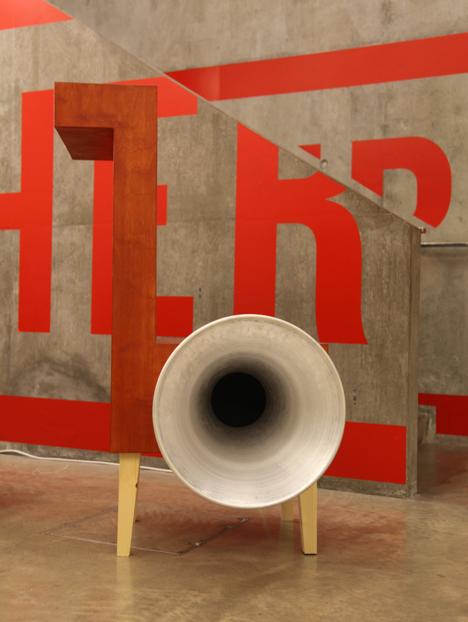
Similarly, this time, V&A introduces the new work, “White Noise Machine”, that asks about "the sound-human relationship" using this "white noise".
It is based on "silent city" project during his residence at Khoj Artist Association in New Delhi in 2010 to erase the town’s noise. He says New Delhi is the noisiest city that he ever visited and could not stand the noise, which normally he comfortably enjoys. So he used the noise erasing effect for TV static called white noise and made a device that produces the same amount of noise in order to make the noisy city silent.
Throughout his works, Suzuki's problem consciousness always stays at "sound" and "physical law". He conveys invisible "sound" and "mechanism of things moving" to viewers as a fun experience. Substance itself is at the same time an object that explains it. His concept is simple, clear and design is pop, that's what makes it good. It is rare to find a designer who is so good at making an entrance to products’ humorous part. It is strange that while looking at his works the machines become loveable and almost human-like.
Supported by ICN Gallery and The Japan Foundation.